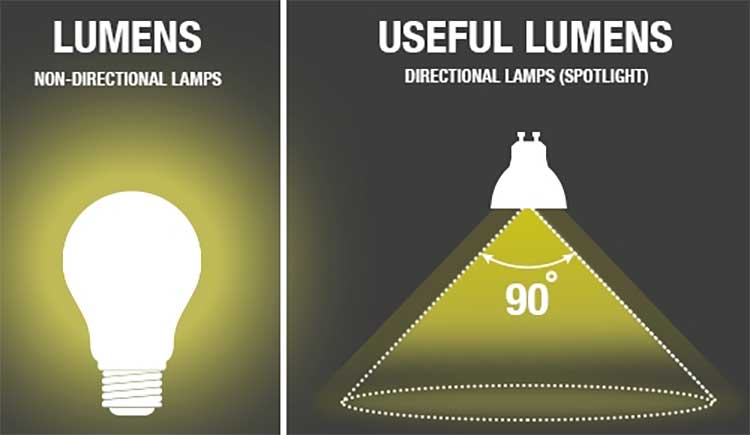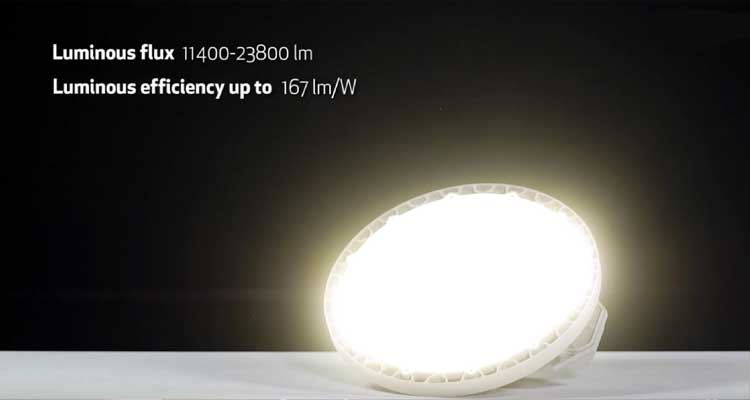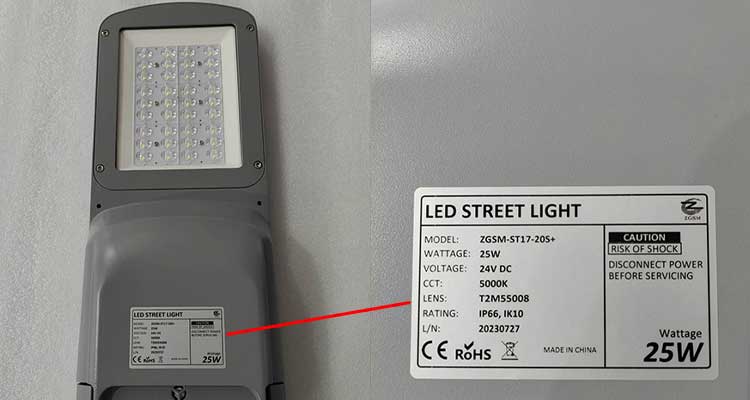When we go to the store to buy light bulbs, we often say to the store clerk, “I want to buy a 5-watt light bulb”, “How much does it cost to buy a 20-watt light bulb” and so on. But you know what? The days of measuring light bulb brightness in watts are over, now the new unit of measurement we need to understand is lumens. Next, I will let you understand step by step the relationship between them and why you should use lumens instead of watts.
Step 1: What is Watt?
Watt (symbol: W) is a unit of power, which reflects the rate of energy use and consumption, so the higher the wattage, the higher the energy consumption of the lamp. When we pay for electricity, we pay for the wattage used. For example, a 15-watt light bulb means that the light bulb consumes 15 watts of energy, which translates into an electricity bill of 0.015 kilowatt-hours of electricity per hour.
Step 2: What are lumens?
Lumens reflect the total amount of visible light emitted by a light source per unit time, so the higher the lumen value, the higher the brightness. Due to historical issues, it still takes time for people to accept lumens as a unit of brightness.
Step 3: How to calculate luminous efficiency?
After we understand the two issues of watts and lumens, we then need to calculate the luminous efficiency. It can help us choose lamps with lower energy and higher brightness. So, how should luminous efficiency be calculated?
I believe we all know from previous physics that there is a physical quantity that represents optical power, which is luminous flux (symbol is Φ). The lumens (lm) we mentioned earlier represent the unit. In addition, we also know that the lamp will lose a certain amount of energy when it emits light. After combining the two, we can get the luminous efficiency, which is the ratio of luminous flux to power (lm/W).
Step 4: Retain effective lumens to achieve low power consumption and high brightness
Through the previous explanation, we know that lamps will definitely lose energy when they emit light, but the energy lost by different materials is different.
For example, incandescent lamps need to heat the filament before they can emit light, and the heating process causes 90% of the energy to be wasted. This is also As a result, although incandescent lamps consume a lot of energy, their brightness is not high and their luminous efficiency is very low.

The same problem also exists with lamps such as halogen lamps. Although they are upgraded versions of incandescent lamps, their luminous efficiency is still not high. This is because incandescent light bulbs (non-directional lamps) emit light in all directions simultaneously, causing the brightness to be evenly distributed in different directions.
In order to achieve higher brightness, there are directional lamps (such as GU10 spotlights), which will shine as much light as possible into one place, thereby consuming the same energy to achieve more brightness.
However, not all directional bulbs have this problem. Bulbs made of LEDs do not have this problem, because the beam angle of LED bulbs is always directional, and all the light they emit enters the room. Moreover, LED bulbs do not need to be heated to emit light, but can emit light after being energized, so the energy loss is much less than that of incandescent lamps.
In order to allow everyone to use low-power and high-brightness lamps, the European Union introduced the “useful lumens” rating. This is a method of measuring the useful light emitted in a standardized 90-degree cone. “Useful lumens” ratings are usually lower than total lumen output because some light (such as spill light) is not useful but is still included in the total lumen rating.
Why do we use lumens instead of watts?
Some people may ask, since we are accustomed to using watts as the unit of brightness, why must we use lumens? Historically, because the level of watts determines the brightness of lamps, watts have been the main unit for measuring the brightness of lamps in the early days.
However, the emergence of energy-saving lamps and LED lamps has changed people’s concept of watts representing brightness. Because LED lights can produce more light with less power consumption, from an economic and environmental perspective, it means we spend less money and achieve better results, so why not. Therefore, we recommend that when purchasing lamps, pay more attention to lumens rather than watts.

From another perspective, it is because the higher the wattage, the higher the brightness, but the higher the energy consumption. In the past, because the brightness of lights was generally low, we would think that there was a positive relationship between wattage and the brightness of the bulb. That is, the higher the wattage, the brighter the bulb.
But now that the brightness of light bulbs is getting higher and higher, researchers have found that these light bulbs are not positively related to the wattage. Instead, after reaching a certain brightness, the increase in wattage can no longer affect the brightness of the light bulb.
Secondly, changes in materials also affect the relationship between watts and brightness. For example, to produce the same energy consumption of 1000lm, an incandescent lamp requires 100W, while an LED lamp only requires about 12W. The difference between the two is as much as 8 times, which is why it is now recommended Change to new unit of measurement.
How to convert lumens and watts?
Although factors such as different materials and shapes will affect the relationship between watts and lumens, we have taken an average to give you a clear understanding of the conversion of lumens to watts.
| General Purpose Bulb Lumens to Watts Conversion Chart | ||||
| Lumens(lm) | Incandescent(w) | HID(w) | CFL(w) | LED(w) |
| 100 | 7 | 6 | 5 | 2 |
| 250 | 25 | 18 | 6 | 2-3 |
| 375 | 25 | 20 | 18 | 4 |
| 560 | 40 | 29 | 10 | 3-6 |
| 800 | 60 | 43 | 13 | 7-10 |
| 1100 | 75 | 53 | 18 | 10-15 |
| 1600 | 100 | 72 | 23 | 15-20 |
| 2600 | 150 | 100 | 42 | 20-30 |
| 3000 | 200 | 175 | 120 | 32 |
How many lumens do I need for my scene?
Each room or space requires different light. For example, in the bedroom where we sleep, we want soft light, while in the living room, on the contrary, we need brighter light to carry out various activities. Therefore, knowing how many lumens each space requires is particularly important when designing your project. Here are some values we have compiled for your reference.
| Area | Lumens/Sq M |
|---|---|
| Kitchen | 300-400 |
| Kitchen (Task) | 700-800 |
| Living Room | 400-500 |
| Hallway | 300 |
| Bedroom | 300-400 |
| Bedroom (Task) | 700-800 |
| Bathroom | 500-600 |
| Bathroom (washbasin) | 700-800 |
| Reading Area | 400 |
| Around the pool | 300 |
| Garden | 400-500 |
What do the other properties marked on the light bulb mean?
In addition to our common two values of watts and lumens, the light bulb is usually also marked with lamp holder specifications, color temperature, and color rendering index lamp parameters. Let’s take a look at them one by one.

Lamp holder specifications (E)
If you do not pay attention to the specifications of the lamp holder, the bulb you buy may not work properly. The specification of the lamp holder is the diameter measured through the thread of the bulb plug, represented by E. For example, if the diameter is 14mm, it is an E14 lamp holder. Common specifications in daily life are E10, E12, E14, E17, E27, and E40.
Color temperature (K)
The color emitted by the light bulb is called color temperature, expressed in K. The lower the value, the more yellow or red the color of the light will be; the higher the value, the whiter or bluer the color of the light will be. Generally speaking, if the color of the light bulb is yellowish, the color temperature value is about 3000, and if the light bulb is white, the color temperature is about 5000~7000.
Color rendering index (Ra/CRI)
The color rendering index represents whether the color displayed under the lighting source is similar to the color under sunlight. The higher the color rendering index, the smaller the color distortion, and the closer the displayed color is to the color illuminated by sunlight; color rendering The lower the index, the greater the color distortion, and the farther the displayed color deviates from the color illuminated by sunlight.




